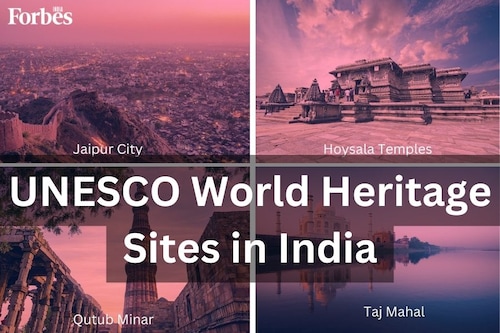43 UNESCO World Heritage sites in India - Find out the latest entry
Learn about UNESCO World Heritage Sites in India, their nomination process, efforts at preserving them and the importance of responsible tourism


UNESCO World Heritage Sites in India are exceptional places recognised for their cultural, natural, or mixed significance. They showcase India"s contributions to human civilisation and significantly impact tourism, education, and local economies. These sites are crucial in preserving and promoting the identity and heritage of India on the world stage. Notably, India has the sixth largest number of Heritage Sites globally recognised by UNESCO or the United Nations Educational, Scientific and Cultural Organisation.
India boasts a diverse array of UNESCO World Heritage Sites, showcasing its rich cultural heritage and stunning natural landscapes. These Sites include ancient temples, historical cities, intricate stepwells, lush wildlife sanctuaries, and revered mountain ranges, offering a glimpse into India"s multifaceted cultural and ecological tapestry.
As of September 2024, there are forty-three UNESCO World Heritage Sites in India. Of these, thirty-five are cultural, seven are natural, and one is of mixed heritage.
Let’s go through the list of 43 heritage sites and the latest nominations for inclusion in the UNESCO World Heritage list for 2024-25.
Cultural Heritage Sites in India are living testimonies of the country"s deep-rooted history and diverse cultural tapestry. These places are architectural marvels and artistic treasures, preserving the heritage of India for generations to come.
We have compiled a list of the Cultural Heritage sites in India below, with data sourced from UNESCO.
First Published: Oct 03, 2024, 09:10
Subscribe Now